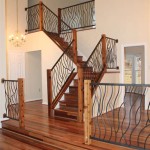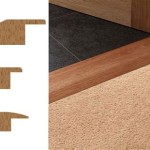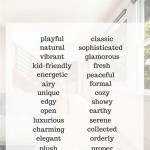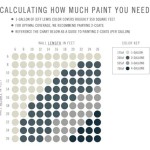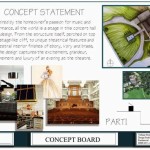How To Lighten Up A Log Cabin Interior
Log cabins, renowned for their rustic charm and connection to nature, often present a unique challenge in terms of interior lighting. The inherent characteristics of log construction – dark wood, small windows, and deep eaves – tend to create interiors that feel dim and somber. Successfully counteracting this effect and brightening a log cabin requires a strategic approach that combines natural light optimization, artificial light supplementation, and clever decorative choices.
The inherent appeal of a log cabin lies in its warm, natural aesthetic. However, this aesthetic can quickly become overwhelming if the interior feels oppressive and dark. A well-lit cabin not only enhances its visual appeal but also improves the overall mood and functionality of the space. A brighter interior feels more spacious, welcoming, and conducive to both relaxation and daily activities. This article provides a comprehensive guide on how to effectively lighten a log cabin interior, transforming it from a shadowed retreat to a light-filled haven.
Optimizing Natural Light Sources
Maximizing the availability of natural light is the first and most critical step in lightening a log cabin. This often involves both structural modifications (where feasible) and strategic window treatments.
Window Expansion and Placement: The most direct approach is to increase the size and number of windows. Larger windows allow more sunlight to penetrate the interior, immediately brightening the space. Consider strategically placing windows to capture light at different times of the day. For example, east-facing windows will bring in morning light, while west-facing windows will capture the afternoon sun. Skylights are an excellent addition, especially in areas where wall space is limited. They allow direct sunlight to flood the interior from above, transforming even the darkest corners. The feasibility of adding windows or skylights depends on the cabin's construction and regional building codes; professional consultation is advised before undertaking any structural changes.
Clearing Obstructions: Overhanging trees and dense vegetation can significantly reduce the amount of sunlight reaching the interior. Trimming or removing trees and shrubs that block windows will dramatically improve natural light penetration. Consider the seasonal changes in foliage; even deciduous trees that provide shade in the summer can block valuable sunlight during the winter months when their leaves are gone.
Window Treatment Selection: While curtains and blinds offer privacy and light control, heavy or dark fabrics can obstruct a significant amount of natural light. Opt for light and airy window treatments, such as sheer curtains, roman shades made from light-colored materials, or cellular shades that allow light to filter through while still providing insulation. Avoid heavy drapes or dark-colored blinds, as these can absorb light and make the room feel even darker. Consider leaving windows uncovered altogether during daylight hours to maximize light exposure, if privacy is not a primary concern.
Reflective Surfaces Near Windows: Positioning mirrors or light-colored surfaces near windows can amplify the effect of natural light. These surfaces will reflect sunlight throughout the room, increasing brightness and creating a sense of spaciousness. Light-colored walls and furniture will also contribute to this effect.
Strategic Artificial Lighting
Even with optimized natural light, artificial lighting is crucial for supplementing illumination, especially during evenings and on overcast days. A well-planned lighting scheme should incorporate multiple layers of light to create a balanced and inviting atmosphere.
Layered Lighting Approach: Avoid relying solely on a single overhead light fixture. A layered lighting approach involves combining three types of lighting: ambient, task, and accent. Ambient lighting provides overall illumination for the room, typically achieved with ceiling fixtures or recessed lighting. Task lighting focuses on specific areas where activities are performed, such as reading lamps for reading nooks or under-cabinet lighting for kitchens. Accent lighting highlights architectural features or decorative elements, such as wall sconces that emphasize the texture of the logs or spotlights that illuminate artwork.
Light Fixture Selection and Placement: Choose light fixtures that complement the rustic aesthetic of the log cabin while providing ample illumination. Consider fixtures with clear or frosted glass shades to maximize light output. Avoid fixtures with dark or opaque shades, as these will absorb light. Position light fixtures strategically to eliminate shadows and illuminate dark corners. Recessed lighting can be particularly effective in log cabins, as it provides a clean and unobtrusive source of ambient light.
Bulb Selection: The type of light bulb used significantly impacts the overall brightness and ambiance of the room. LED bulbs are the most energy-efficient option and offer a wide range of color temperatures. Opt for bulbs with a color temperature in the "warm white" range (2700-3000 Kelvin) to create a cozy and inviting atmosphere, or "daylight" range (5000-6500 Kelvin) for brighter, more natural-looking light. The appropriate choice depends on personal preference and the intended use of the space. Ensure that all light fixtures are compatible with the chosen bulb type.
Dimmer Switches: Installing dimmer switches allows precise control over the intensity of artificial light, creating the perfect ambiance for any occasion. Dimmer switches also offer energy savings by reducing power consumption when less light is needed. Consider installing dimmer switches on all ambient and accent lighting fixtures to maximize flexibility.
Embrace Reflective Elements in Fixtures: Choose light fixtures that have reflective surfaces, such as polished chrome or mirrored bases. These surfaces will bounce light around the room, increasing brightness without requiring additional fixtures.
Decorative Elements and Color Palette
Beyond lighting, the choice of colors and decorative elements plays a crucial role in lightening a log cabin interior. A lighter color palette and strategically chosen accessories can significantly enhance the overall brightness and spaciousness of the space.
Light Color Palette: Dark wood walls absorb a significant amount of light. Painting some of the walls a lighter color, such as white, cream, or a pale pastel, can dramatically brighten the interior. If painting the logs isn't desired, consider painting the ceiling a light color, as this will reflect light downward. Light-colored flooring, rugs, and furniture will also contribute to a brighter atmosphere. Using light-colored textiles such as throws and pillows can further enhance the effect.
Mirrors as Reflective Tools: Mirrors are invaluable tools for brightening a log cabin. Strategically placed mirrors can reflect both natural and artificial light, creating the illusion of more space and making the room feel brighter. Consider hanging a large mirror on a wall opposite a window to maximize the reflection of natural light, or use smaller mirrors to highlight specific areas or architectural features. Mirrors with ornate frames can also add a touch of elegance and visual interest.
Strategic Use of Textiles: Incorporate light-colored and textured textiles throughout the cabin. Light-colored curtains, rugs, and upholstery will reflect light and create a more airy feel. Textured fabrics, such as linen or cotton, add visual interest without adding excessive weight or darkness. Avoid heavy, dark fabrics, which can absorb light and make the room feel smaller.
De-clutter and Streamline: Clutter can make any space feel smaller and darker. Regularly declutter and streamline the interior to create a more open and inviting atmosphere. Minimize the amount of furniture and accessories, and choose pieces that are functional and visually appealing. A well-organized space will naturally feel brighter and more spacious.
Bringing the Outdoors In: Incorporating natural elements into the interior can enhance the connection to the outdoors and create a more cheerful atmosphere. Bringing plants indoors adds a touch of greenery and life to the space, while also helping to purify the air. Consider using light-colored pots and planters to further enhance the brightness of the room.
By strategically implementing these techniques, log cabin owners can effectively lighten their interiors, transforming them into bright, inviting, and functional spaces while still retaining the charm and character that makes log cabins so appealing. Careful planning and attention to detail are essential for achieving the desired effect.

3 Ways To Brighten Up The Interior Of A Log Cabin Home

Lighten Up Log Cabin Homes
27 Log Cabin Interior Design Ideas To Spark Inspiration

Brighten A Log Home Interior 800 818 9971 The Woodworkers Pe

How To Brighten Up A Rustic Cabin Crafts Diy

Interior Lighting Tips For Your Log Home

Brighten A Log Home Interior 800 818 9971 The Woodworkers Pe
27 Log Cabin Interior Design Ideas To Spark Inspiration
Designing The Interior Of A Modern Log Cabin Without Losing Atmosphere Mansion Global

Cabin Interior Design Tips To Create A Modern Decorilla
Related Posts

